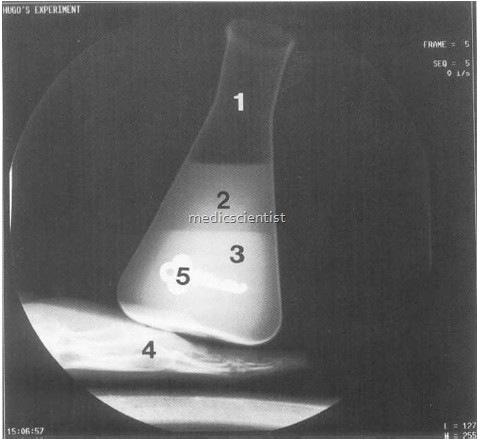Plain x-ray film The Basics of X-ray
How X-ray works —
- Radiographic film before an image is taken is transparent and x-rays made it Darker by reactions,
- When a x-ray radiograph is taken,the X-rays reach the film and made it darken
- So , more X-rays reach an area of the film, the darker that area will be on the radiograph.
- and the lesser the xray the more brighter the area after the x-ray,
- if an object is very dense,then less X-rays will reach the film and the less darker the area become, and the image of the object will appear white on the radiograph.
- if an object has little density,because it allows most of the X-ray beam to reach the film, so its image will appear black on the radiograph
Types of X-ray Radiograph —
- Only five basic X-ray radiographic densities exist,
- gas,
- fat,
- fluid,
- bone and
- metal densities
- They are in order of increasing brightness order
- A film should not be too dark (over exposed ) or too white (under exposed).
- A good quality film can really improve the precision of a diagnosis.
key concept of X-ray Radiology —
- Key concept.
- The five radiographic densities are in order of increasing brightness:
- Air,
- Fat,
- Fluid,
- Bone,
- Metal
- the lungs filled with air so X-ray become dark, or air density,
- heart X-ray appears lighter than the lungs X-ray, because they are largely composed of water,
- Bones X-ray are brighter structures because they are composed of calcium
- So all Anatomic structures seen on the X-ray radiograph can be identified by their characteristic density


